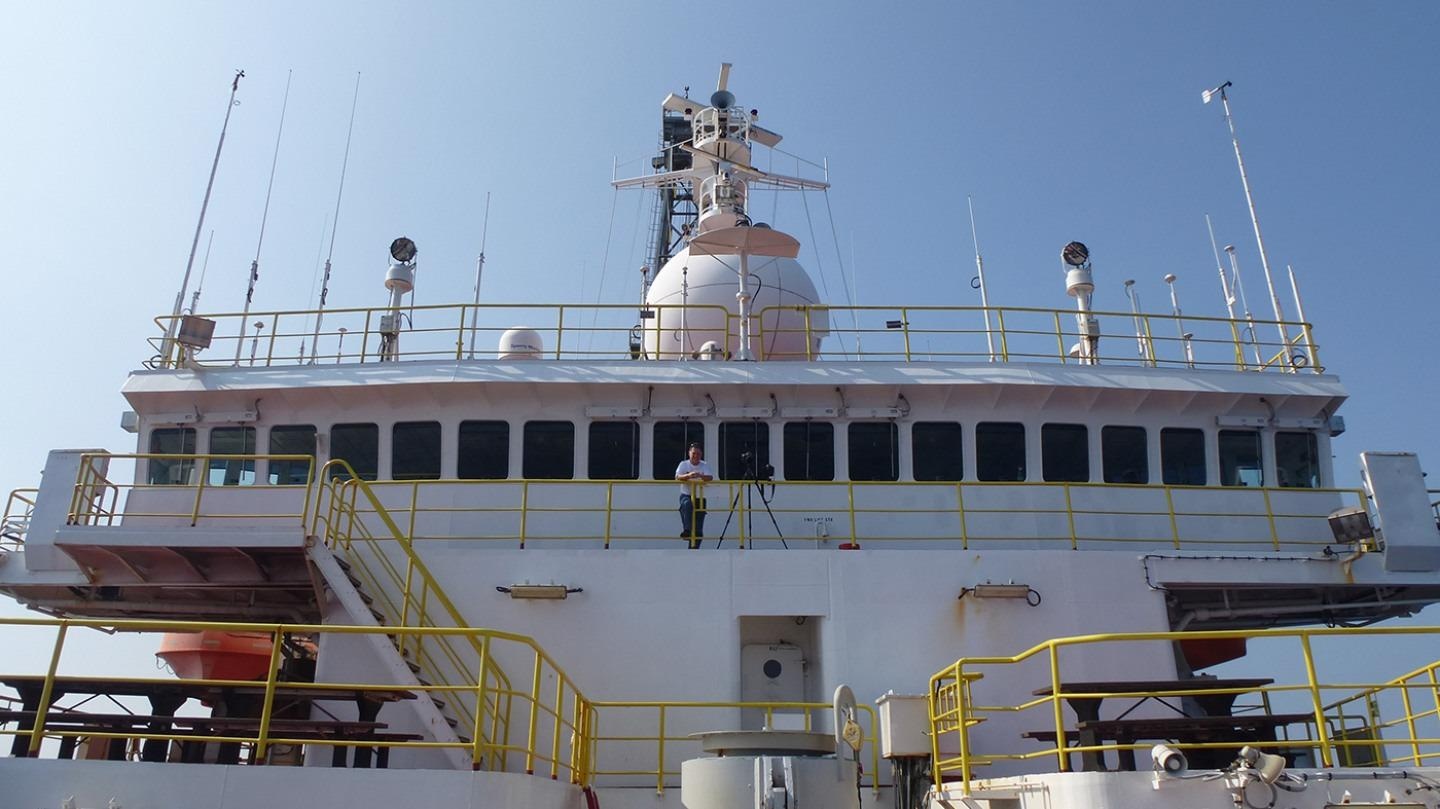Jun 7 2021
A new study conducted on monsoon rainfall on the Indian subcontinent over the past few million years has offered crucial clues about the way monsoons will react to upcoming climate change.
 The research vessel JOIDES resolution sailed to the Bay of Bengal in 2015 to collecting sediment cores that hold data on monsoon rainfall spanning millions of years. Image Credit: Brown University.
The research vessel JOIDES resolution sailed to the Bay of Bengal in 2015 to collecting sediment cores that hold data on monsoon rainfall spanning millions of years. Image Credit: Brown University.
Published in the Science Advances journal, the study found that periodic variations in the intensity of monsoon rainfall over the last 900,000 years were linked to changes in continental ice volume, atmospheric carbon dioxide (CO2) and moisture import from the southern hemisphere of the Indian Ocean.
These study findings support predictions of climate models that higher global temperatures and rising CO2 will result in stronger monsoon seasons.
We show that over the last 900,000 years, higher CO2 levels along with associated changes in ice volume and moisture transport were associated with more intense monsoon rainfall. That tells us that CO2 levels and associated warming were major players in monsoon intensity in the past, which supports what the models predict about future monsoons—that rainfall will intensify with rising CO2 and warming global temperature.
Steven Clemens, Study Lead Author and Professor of Geological Sciences, Brown University
According to Clemens, the South Asian monsoon is plausibly the single most robust expression of hydroclimate on Earth, with certain locations receiving several meters of rain every summer.
The rains are essential to the economy and agriculture of the region but can also promote crop disruption and flooding in years when they are specifically heavy. Since the monsoons play such a huge role in the lives of almost 1.4 billion people, getting a better insight into how climate change may affect them is crucial.
For many years, Clemens has been collaborating with an international research team to better comprehend the significant drivers of monsoon activity. In November 2014, the researchers sailed aboard the research vessel JOIDES Resolution to the Bay of Bengal, located off the coast of India, to retrieve sediment core samples from below the seafloor.
These core samples maintain a record of monsoon activity covering millions of years.
The rainwater generated by the monsoons every summer ultimately drains off the Indian subcontinent into the Bay of Bengal. The runoff produces a layer of dilute seawater in the bay that rides atop the more saline, denser water below.
The surface water is home to microorganisms, known as planktonic foraminifera, which make use of nutrients in the water to build their shells, which are composed of calcium carbonate.
And after the creature dies, the shells sink to the bottom and get trapped in the sediment. By collecting core samples of sediment and examining the oxygen isotopes present in these fossils, researchers can divide the water salinity in which the creatures survived. That salinity signal can be utilized as a sign of varying rainfall amounts over time.
Other information obtained from the samples complements the foraminifera data. When the river runoffs into the bay, it brings sediment from the continent with it, offering another indicator of the intensity of rain.
Another rainfall-related signal that reflects variations in the vegetation type is the carbon isotopic composition of plant matter washed into the ocean and trapped in sediment. On plant leaves, the hydrogen isotope composition of waxes changes in varied rainfall surroundings, and that sign can be rebuilt from sediment cores as well.
The idea is that we can reconstruct rainfall over time using these proxies, and then look at other paleoclimate data to see what might be the important drivers of monsoon activity. That helps us to answer important questions about the factors driving the monsoons. Are they primarily driven by external factors like changes in Earth’s orbit, which alter the amount of solar radiation from the sun, or are factors internal to the climate system like CO2, ice volume and moisture-transporting winds more important?
Steven Clemens, Study Lead Author and Professor of Geological Sciences, Brown University
Clemens is affiliated with the Institute at Brown from Environment and Society
The team discovered that periods of more extreme monsoon rainfall and winds tend to track low points in global ice volume and peaks in atmospheric CO2. Cyclical variations in Earth’s orbit that change the amount of solar light received by each hemisphere also contributed to monsoon intensity, but on their own could not describe the variability of monsoon.
Taken together, the study results indicate that monsoons are certainly sensitive to CO2-related warming, which confirms climate model predictions of reinforcing monsoons with regard to higher CO2.
The models are telling us that in a warming world, there’s going to be more water vapor in the atmosphere. In general, regions that get a lot of rain now are going to get more rain in the future. In terms of the South Asians monsoons, that’s entirely consistent with what we see in this study.
Steven Clemens, Study Lead Author and Professor of Geological Sciences, Brown University
The study was financially supported by the U.S. National Science Foundation (OCE1634774), the Japanese Society for the Promotion of Science (JPMXS05R2900001 and 19H05595), the Japanese Agency for Marine-Earth Science and Technology, the United Kingdom Natural Environment Research Council (NERC; NE/L002493/1), the United States Geological Survey, and Technology, and Research Initiative Fund (Arizona Board of Regents).
Journal Reference:
Clemens, S. C., et al. (2021) Remote and local drivers of Pleistocene South Asian summer monsoon precipitation: A test for future predictions. Science Advances. doi.org/10.1126/sciadv.abg3848.